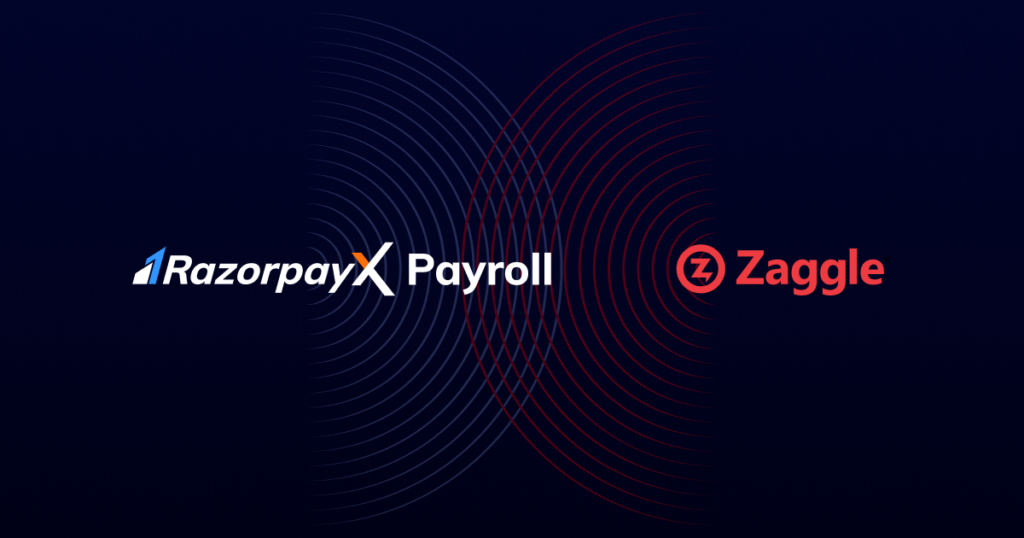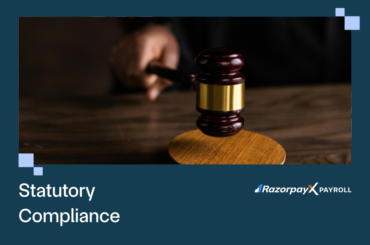Flexible Benefit Plan is a compensation structure that allows employees to customise their salary components per their preferences. A fixed amount of money from the salary of an employee can be allocated to various benefits and allowances, such as:
- Health Insurance
- Food Coupons/Grocery Coupons
- Education Allowance
- Gadget Allowance
- Transport Allowance
- Housing Allowance
- Fuel Allowance
Flexible benefits help employees optimise their tax liabilities as some allowances are tax-exempted or have tax benefits. It increases employee satisfaction and retention without increasing the overall payroll costs.
Table of Contents
What is Flexible Benefit Plan in Salary?
A Flexible Benefit Plan or FBP is termed ‘flexible’ because the company can fix or regulate packages as per Govt compliances, company norms, and the employee’s position. Although the organisation/HR generally allocates salary components, companies should also consult employees when allocating FBP in salaries. The modifications are, however, protected by checks and balances to prevent its misuse.
Policies of Flexible Benefits Plan
For each salary component, the maximum allowance under the Flexible Benefit Plan is decided by the employers and HR. The policy is declared to all employees at the beginning of the year or whenever a new employee joins the company.
The Flexible Benefit Plan is structured as per the following policies:
Quantity Based Policy
- Generally, the employer sets the base value for each component. Employees can choose the amount they require. For example, a company reimburses broadband bills every month with a base amount of Rs. 800 and a maximum amount of Rs. 1500. Now, as an employee, you can get the reimbursement of 1 bill valued between the specified range or more than 1 bill valued between the specified range.
Opt In Policy
- In the case of an opt-in policy, employees can simply claim the specified amount as part of their Flexible Benefit Plan. They do not have the option to make modifications to the amount they are claiming as it will be fixed per each component.
Mutual Exclusion
- Mutually exclusive policies mean an employee can choose any one component for a claim out of the options available. For example, a company reimburses driver’s fees and fuel expenses as reimbursement. However, you can only choose one of the options to get the claim.
What is FBP Declaration?
Flexible Benefit Plan declaration means you have to declare the details of the expenses you have made under this component along with proof.
This will help in reducing the amount of your taxable salary. In short, you can optimise your tax benefit when you declare the expenses made under this component of your salary. You have to declare this to your employer.
Components of FBP
Food and Beverage costs
The income tax department considers meals and non-alcoholic beverages offered by the company during office time as a benefit for the employee.
The company may issue food bills such as meal or grocery coupons (Sodexo coupons or meal vouchers) to its employees ranging from Rs 2200 to Rs 3000. Such bills are is tax-free for the employees and can be reimbursed.
Conveyance
Employees commuting to work every day means significant travel time and daily costs. Hence, it’s only understandable for them to expect the employer covers the expenses in some quantity.
Some employers compensate for the travel expenses. The expense in the FBP is capped by the employer and may differ from company to company.
The Flexible benefit plan facilitates covering the expenses of employees related to conveyance in the following cases:
- Fuel bills: Employees may claim the cost of petrol or diesel against submitting bills for the same. FBP allow the inclusion of this essential requirement for funding fuel costs within the salary structure of the employees. While some companies have a minimum amount for claiming the bill, some offer a complete waiver on fuel bills.
- Employer’s Vehicle (Car): Sometimes the company provides few employees with a car that can be used only for official purposes. In such cases, the employee has to produce a certificate that claims that the vehicle was indeed used for business use only along with the fuel bills for the journey. However, if the car provided by the employer is used for both business and personal purposes, then a part of the expenses are met by the employer whereas the rest is paid by the employee themself.
- Employee’s Personal Vehicle (Car): While some companies provide a select few employees with a car, most companies offer compensation to some employees who use a personal car for office purposes. A separate provision is made in the CTC of such employees.
- Chauffeur service: For employees in executive positions, some companies offer a flexible benefit of covering the cost of a driver. This component is mentioned in the FBP declaration of the employee’s salary structure.
Professional Development
Some companies pay their employees to upskill by taking up skill-based courses, or in some cases, higher education. The employees will have the benefit of adding another feather to their hat and that can help in reducing your tax burden.
Food and beverage expenses
A lot of companies allow employee to reimburse their food and beverage expenses under the Flexible Benefit Plan. Generally, food or grocery coupons are given to the employee, which is a part of their salary.
Suggested Read: Conveyance Allowance Blog
Telephone bills
Employers understand the need for mobile connections/internet service to fulfil official tasks. Therefore, most companies include postpaid mobile service bills and broadband connection bills as part of the flexible benefits plan in the salary.
Benefits of Flexible benefit plan for employees
Tax saving: Easy restructuring helps employees reduce their tax burden. For example, food bills, mobile phone bills, and travel allowance are not taxable. Factoring in these components can help the employee separate this on the payslip from their basic salary on which tax is calculated.
In fact, employers can help save up to Rs. 40,000 in taxes for their employees. It’s a win-win for both the employers, as it helps them build an employee-first culture, and for employees since it becomes an avenue to save more tax.
| Allowances* | Monthly | Annually | Tax Savings/Annum | ||
| Slab-1 (5%) | Slab-1 (20%) | Slab-1 (30%) | |||
| Meal Card | 3,500 | 42,000 | 2,100 | 8,400 | 12,600 |
| Fuel Card | 2400 | 28,800 | 1,440 | 5,760 | 8,640 |
| Gift Card | 5,000 | 250 | 1,000 | 1,500 | |
| Telecom | 1,000 | 12,000 | 600 | 2,400 | 3,600 |
| Attire/Uniform | 1,000 | 12,000 | 600 | 2,400 | 3,600 |
| Books & Periodicals | 1,000 | 12,000 | 600 | 2,400 | 3,600 |
| Total Allowance | 8,900 | 1,11,800 | |||
| Total Tax Saved | 5,590 | 22,360 | 33,540 | ||
Better financial control & planning: When employees know that the company offers compensation for certain expenses as part of the monthly salary, they can plan their budget and expenditures for the entire year better.
Benefits of Flexible benefit plan for employers
Employee retention: Implementing FBP displays the company’s employee-friendly sentiment. The flexibility factor makes the employee feel valued and boosts employee retention.
Better recruitment: Companies stand the chance of attracting better talent when they offer compensation with various flexible benefits.
Increases productivity: By offering a range of choices for FBP in salary, employers make a healthy and happy workforce, leading to higher productivity.
How do you declare FBP in salary?
To declare Flexible Benefit Plan (FBP) components in your salary in India, follow these steps:
- Choose Benefits: Select the benefits you want to include under FBP, such as medical insurance, conveyance allowance, house rent allowance (HRA), and more.
- Calculate Amounts: Determine the amounts you wish to allocate to each benefit component based on your preferences and eligibility.
- Provide Details: Inform your employer about your chosen FBP components and their respective amounts.
- Submit Documents: Submit necessary documents and proofs to support your chosen benefits. For instance, you might need medical bills for medical insurance claims or rent receipts for HRA.
- Update Payroll: Your employer will then incorporate the chosen FBP components into your salary structure and payroll calculations.
- Tax Implications: Keep in mind that different FBP components have different tax implications. Some components might be tax-exempt, while others could be subject to tax deductions. Use our table above to see.
Policies of Flexible Benefit Plan
Mutual Exclusion Policy: Under this policy, the employer and the employee may mutually decide what components are supposed to be excluded from the FBP.
Quantity-based policy: It governs all components whose specific base value is declared by the employer. The employee may have the option of deciding the quantity of the component based on the base value.
Opt-in Policy: As the name suggests, by implementing an Opt-in policy, the components are declared ‘opt-in’ by the employer, and the employee cannot modify the amount for that component as the employer has chosen to make that a fixed pay.
Dependent policy: This is when one component is declared as dependent on another component. Hence, when the employee makes an FBP declaration, they must do so for both components.
Challenges in implementing Flexible Benefit Plan
The typical process of opting for flexible benefits, their declaration, and validation involves below painful steps:
For Employees
- Need to be educated about flexible benefit plans & their function
- Need to select the benefits from a basket of them
- Upload bills for all the benefits claimed
- Have to pay upfront and then get the reimbursements/money later
Employers
- Administration of benefits, for instance, managing cards across vendors, benefits across employees in the HR portal, new employee education about Flexi benefits plan
- Periodic verifications of the bills uploaded (monthly, quarterly, yearly)
- Adjustments of actuals vs claims on the bills uploaded and managing the same in the systems
Due to all these operational hassles and complexities involved, some organisations don’t consider offering Flexi benefits to their employees.
Introducing RazorpayX Payroll + Zaggle–A fully Automated Flexi Benefits Experience
Zaggle offers a multi-user expense account with which employees can save more on taxes, up to Rs. 40,000! It offers a multi-wallet card for meeting employee reimbursements across tax exemption and expense categories like Meal, Reward, Fuel, Telecom/Broadband, Travel, and Expense.
 By partnering with Zaggle, RazorpayX Payroll has become the first HR & payroll software to introduce a completely automated Flexi benefits experience via cards with our software.
By partnering with Zaggle, RazorpayX Payroll has become the first HR & payroll software to introduce a completely automated Flexi benefits experience via cards with our software.
-
- No Operational Hassle for admins of companies since proof verification is automated via the card; there will be buckets for each of the benefits (Petrol, Food, Communication) and the amounts can be used only at certain establishments.
- Reduced friction in the process of FBP declaration and choosing benefits for employees.
- Seamless employee experience, by enabling them to use all the benefits via the card.
Sign up today for RazorpayX Payroll or sign in to experience the new way of flexible benefits!
FAQs
What is flexi benefit plan in CTC?
Flexible Benefit Plan is a compensation system that enables employees to customize their salary components according to their preferences. Employees receive a fixed amount of money that can be distributed across various benefits and allowances.
What are the downsides of FBP?
The major downside of FBP is the implementation as the process is a bit complex and takes time for employees to understand.
Who is eligible for FBP?
Generally, full-time employees of any organisation are eligible for FBP. However, sometimes, it is decided by the HR and the employer based on the employee’s salary and designation.





